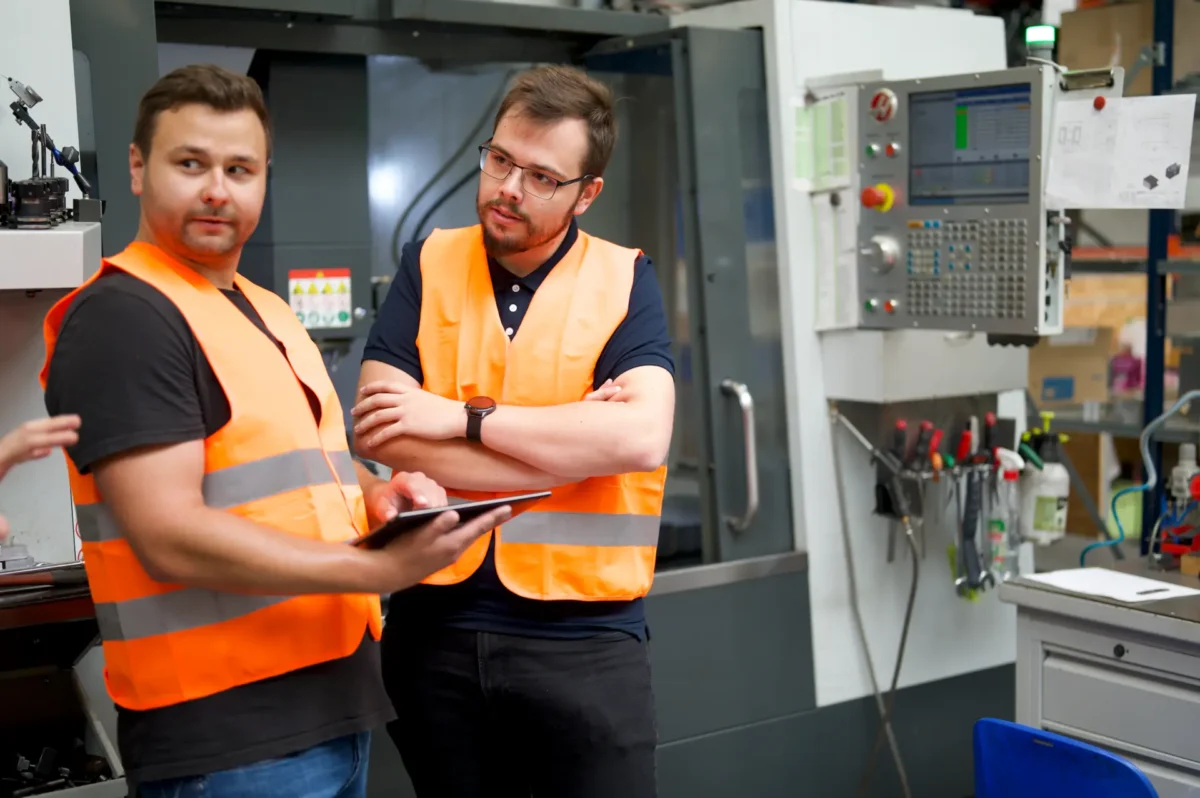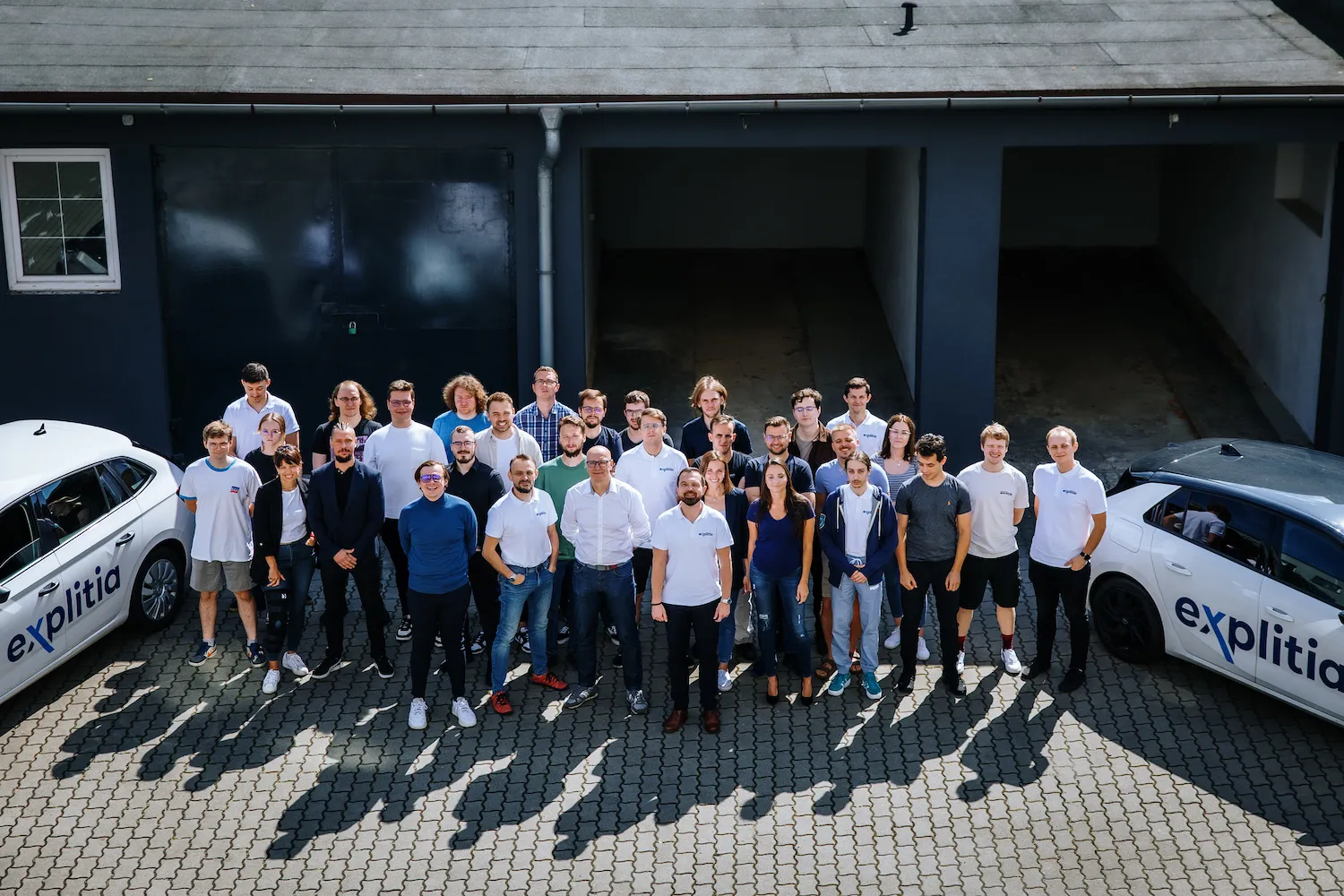Digital transformation – both a necessity and a privilege. This is how entrepreneurs should view this trend in 21st-century industry. It is estimated that by 2027, companies worldwide will invest approximately seventeen trillion zlotys in digital transformation projects. Why does this matter? That’s what today’s post is about.
Digitization vs. digital transformation in industry
The term digitalization actually emerged when we first encountered computers and devices capable of storing data digitally. These technologies allowed us to move away from paperwork, archiving documents digitally instead. This process of converting physical, hand-written documents into digital form is what we call digitization. On the other hand, digital transformation refers to the process of transforming a company, its environment, business, and even human life, with the integration of digital technologies.
In the beginning, there was the computer… How digital transformation began?
As mentioned earlier, digitization began with the advent of computers. However, its larger adoption occurred in the 1970s when personal computers were introduced. At that time, only a few brands in the United States were manufacturing these computers.
The true widespread use of computers in homes didn’t occur until the 1990s, with the introduction of the first user-friendly interfaces and operating systems. The first widely adopted system was Microsoft’s Windows 95. Thanks to this, everyday people, not just “geeks” or electronics enthusiasts, could use computers for their personal needs. Every major digital revolution is driven not just by the emergence of new technology but by the fact that it can be operated by the average person.
Windows 95 was the first widely recognized operating system that made computers accessible to people of all ages and skill levels.
Another breakthrough came with the introduction of smartphones. This technology has largely defined the times we live in today.
In 2007, Steve Jobs announced the launch of the first iPhone, which, paradoxically, wasn’t the first smartphone (just like Windows 95 wasn’t the first operating system). However, the user-friendly interface and strong marketing led to widespread interest in smartphones, not just among business people but also among ordinary users who could see the value in faster information flow and the possibilities offered by smartphones. We can say that 2007 marked the point when our phones, which were previously used only for calls and text messaging, became the media centers of our daily lives.
From my experience, smartphones have also initiated a significant change. Using them daily has accustomed people to touch interfaces, which are now widely used in industry. Most devices are now operated via touch panels, and since we all use smartphones, it’s easier to adapt to the solutions used in the workplace or public spaces that operate similarly. If we had introduced touch panels 25 years ago, it would have been difficult. Nowadays, no one needs to be trained on how to use a touchscreen.
Digital transformation in industry
Digital transformation in industry is a process that changes how companies operate. It often results in a revolution within the company, especially when it’s still relying on manual, paper-based reporting. When such a company implements digitalization solutions, such as electronic information flow or document archiving, it completely reshapes the workflow. Thus, managing the digitalization process properly becomes crucial.
What benefits can a company gain from digital transformation?
Team optimization
First, digitalization optimizes team performance. Consider a typical restaurant as an example. The waiter takes orders using an app, and the order automatically appears in the kitchen.
Second, an algorithm often helps plan the sequence of dish preparation, speeding up the entire process.
Another benefit is automated billing. This allows the restaurant to track how many dishes were ordered and at what cost, and the waiter doesn’t need to look for a paper order because everything is in the system, including table layout and occupancy information. So, while we interact with the waiter as customers, behind the scenes, they are using digital tools that make their job easier and improve our experience.
Work reporting
Another example of digitalization is work reporting. Everyone, regardless of their role, must report their work in some capacity. In manufacturing companies, workers are often evaluated based on paper reports. How does this work in practice?
Example
An operator running a machine fills out a report with details about how many items they produced within a specific time frame, whether they had any downtime, how much waste they generated, the machine’s efficiency, challenges faced, and so on. These reports are usually written on a sheet of A4 paper, and filling them out can take anywhere from a few minutes to over ten minutes.
Traditional reporting has its drawbacks, such as difficulties reading someone else’s handwriting. Moreover, someone will eventually need to enter the report into a system or a spreadsheet. This delays the flow of information to management. You can see why this type of reporting has its challenges. So why does it persist? In short, people are used to certain practices in the workplace, and there hasn’t been enough motivation to change them.
Why do companies invest in digital transformation?
Let’s consider why companies invest in digitalization. I mentioned earlier that by 2027, businesses are expected to spend around seventeen trillion zlotys on digital transformation. This prediction comes from Statista, based on historical trends (in 2018, global digitalization spending was around one trillion dollars, more than four times less).
What has caused these investment costs to rise so dramatically, at least in nominal terms?
Labor shortage
First, we are currently experiencing very low unemployment, to the point where there is a shortage of workers. Companies are therefore looking at processes they can automate. Data flow is often the first area they focus on because it is relatively easy to automate.
High employee turnover
Second, companies face significant employee turnover, which creates problems with transferring knowledge and know-how from experienced employees to newer ones. This is particularly true in non-core business areas (such as reporting) rather than the essential aspects that drive the business.
Competitiveness
Another reason for digital transformation is competition. Companies are in a race to automate. This applies to all industries, but let’s stick with our restaurant example. If a restaurant implements digital information flow and billing, it can process orders faster and reduce the risk of human error. As a result, customers are more likely to visit a restaurant where such mistakes don’t occur, and service is efficient. The same logic applies to any other business. If a company can produce more, faster, and at lower costs using digital solutions, it has a better chance of competing on price and quality.
Technology – No Longer an Innovation, but a Standard
It’s important to remember that as technology advances, it becomes safer and more affordable. The same goes for software systems and applications. Every year brings more standardized solutions that have been proven in other market scenarios, making them safer and cheaper to implement in companies.
Promising return on investment
Another important consideration is the return on investment (ROI). This is a fundamental metric for companies when deciding whether to invest. ROI is typically calculated by comparing the costs of implementing a system or solution to the savings or efficiencies gained.
The impact of global digitalization on industry
We mustn’t forget that businesses are subject to increasingly strict requirements for documenting and sharing information. Additionally, customers demand more transparency and prefer digitally signed, verifiable information.
As a result, production processes are becoming more automated. There are also many support programs for entrepreneurs and managers, and the knowledge gained from these programs increasingly encourages business owners to invest in digital transformation.
We can say that we’ve been through four industrial revolutions. We started with the steam engine, moved through electrification, automation, and mass production, and now we’ve entered a new phase where the key technologies are artificial intelligence and the interaction between machines, people, and systems. I hope that within this revolution, we can navigate successfully, and I invite you to familiarize yourself with the concept of digital transformation.
If this topic interests you, be sure to subscribe to my YouTube channel – Digitalizuj.pl.



